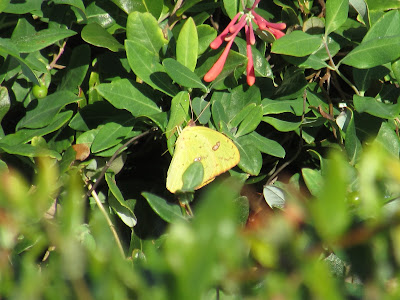Nature Note #205: Colorful Wanderers

The sun was already out by the time I arrived at the beach. A warm breeze wafted over the greenbrier ( Smilax rotundifolia ) tangles along the shores of Bogue Banks while a sweet perfume of nectar hung gently in the air near the shrubs where towhees and mockingbirds hid chattering. I sniffed the air; if only I could fully smell it. Having a cold really puts a damper on experiencing the outdoors especially when breathing is kinda of important for one's survival. Wrinkling my nose and blinking sun-sore eyes, I scoured the nearby bushes for any signs of butterflies that had been moving through the past few days. Initially, nothing moved. Perhaps I had come too early or maybe it was too breezy for these colorful insects. I glanced over the beach and noticed a squadron of brown pelicans ( Pelecanus occidentalis ) and infantry of laughing gulls ( Leucophaeus atricilla ) bombarding a school of fish in the surf zone. Over and over, I saw feathery missiles diving in the crystal blue wat


